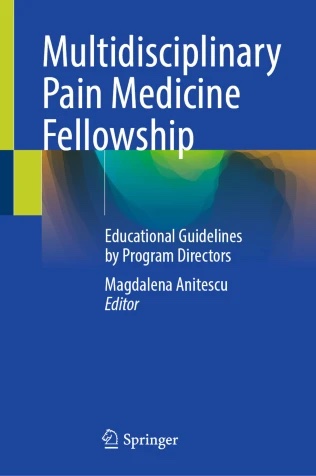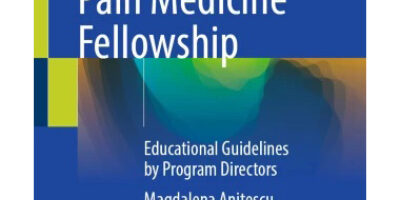Several APPD Members Contributed to the Authoritative Guide

A new guide to pain medicine fellowship curriculum has been published, with several APPD members authoring chapters. The comprehensive resource provides standardized, evidence-based information on topics that pain fellows need to know to complete training and enter practice, as well as a foundational tool for all pain practitioners.
Multidisciplinary Pain Medicine Fellowship: Education Guidelines by Program Directors is now available for download from SpringerNature Link. Topics include interventions, surgeries, and emerging techniques in pain medicine, as well as key publications to learn the art and science of pain medicine.
Pain program director and APPD Past President Magdalena Anitescu, MD, PhD, professor at the University of Chicago, edited the book. Her experience in pain medicine education spans more than 15 years. In addition to being a past president of APPD, she has served in numerous leadership and faculty roles with national and international organizations over the years, including ASRA Pain Medicine, the American Academy of Pain Medicine, the International Neuromodulation Society, the European Society of Regional Anaesthesia & Pain Therapy, and American Society of Anesthesiologists. Currently, she is the president of the North American Neuromodulation Society.

“In a time where pain medicine is such a dynamic and innovation incubator, Multidisciplinary Pain Medicine Fellowship will ensure that future generations of pain practitioners speak the basic common language of our specialty and advance best practices in pain medicine,” Anitescu said.
Several APPD members contributed to the book including President Meredith Barad, MD; President-Elect Alexander Bautista, MD; Immediate Past President Lynn Kohan, MD; and Board Member Thelma B. Wright, MD, JD. Past presidents Rene Przkora, MD, PhD, FASA, and Sayed Wahezi, MD, also contributed, in addition to many other program directors.
Multidisciplinary Pain Medicine Fellowship begins with a background and history of pain medicine fellowship in the United States and progresses through basic knowledge, taxonomy, pain assessment and evaluation, and a range of interventions including the use of opioids and procedural interventions. Sections on cancer pain, as well as setting up fellows for success and enhancing practice value, are also included.
The book can be used as board preparation material and to guide development of curriculum at individual institutions.
The publication is available to download as an ebook ($59.99) or for order as a print copy ($79.99) at https://link.springer.com/book/10.1007/978-3-031-88357-6.




